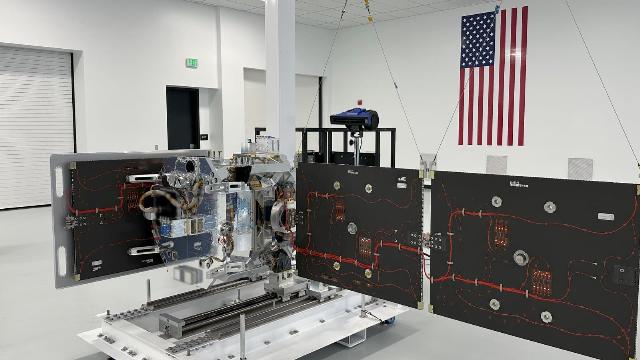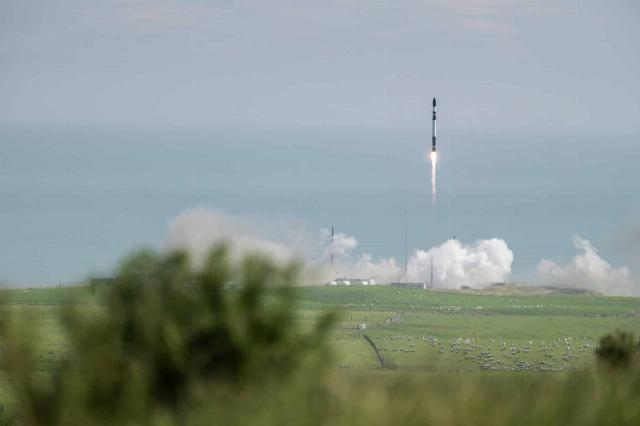The Pentagon is going to work out a scenario in space for the rapid deployment of a satellite orbital grouping in response to the threat posed by spacecraft of a potential enemy. During the exercises, the US military will use two satellites that private aerospace companies will develop specifically for this mission. Thus, the United States wants not only to "send a signal" to other countries that they will be able to quickly resist "aggression in orbit", but also to show exactly how they will do it.
In recent years, some major powers, including the United States and Russia, have hinted, albeit not openly, about their intentions to use space for military purposes and are trying in every possible way to increase "space power." They do not talk about the direct deployment of weapons in space (this is prohibited by treaties ), but these countries are developing and even putting into service combat systems capable of operating on satellites. Among such weapons are special systems for jamming GPS, lasers capable of disrupting the operation of satellites, anti-satellite missiles, spy satellites, weapons that have a blinding effect on spacecraft. Many experts are confident that, most likely, in future conflicts, space will become the main battlefield.
Such a space arms race, if it can be called that, constantly "increases the degree" of threats, which, in turn, forces the military to simultaneously look for ways to quickly respond to these challenges. One option is to create a military satellite fleet that can protect valuable spacecraft in orbit. But before such a fleet can be used, it must be tested in real conditions.
The US Space Forces recently announced that they are going to hold the first military exercises in space, which are designed to show how the Pentagon is going to resist "aggression in orbit."
During the exercises, dubbed Victus Haze, the military "will work out a realistic scenario for rapid response to threats in space." They involve two spacecraft created by private aerospace companies Rocket Lab and True Anomaly. The first device will play the role of a "defender" in orbit, the second — a "suspicious object" posed as a satellite of a potential enemy, such as China or Russia. The Pentagon has already signed a contract with these companies to develop devices worth $32 million and $30 million, respectively.
According to the plan, when the exercises begin, True Anomaly will be the first to be notified, which will have to assemble the payload and put it into the target orbit in 12-84 hours. Most likely, the company will use the SpaceX Falcon 9 rocket for this. Probably, the True Anomaly device, which will be the size of a large refrigerator, will be integrated into some kind of common payload. That is, SpaceX will not put one satellite into orbit specifically. The launch of the mission will take place either from the Cape Canaveral cosmodrome in Florida, or from the Vandenberg Air Force Base in California.

One of the satellites that the private company True Anomaly collects
Image Source: True Anomaly
After this launch, the Space Forces will notify Rocket Lab about the start of their part of the mission. The company will have to assemble its device, similar in size to True Anomaly, in 24 hours and launch it into the target orbit. Rocket Lab will do this with its ultralight Electron class launch vehicle from a spaceport in New Zealand or Virginia.
When the Rocket Lab device is in orbit, it will immediately begin to monitor a "suspicious object" (the True Anomaly satellite), which will be extremely maneuverable. He will be able to get close to the defender, move away from it, and also perform "unusual and unexpected actions," but what exactly, the statement of the Space Forces does not say. Note that the defender itself will be just as maneuverable.

Launch of the Electron launch vehicle from the spaceport in New Zealand
Image source: Rocket Lab
The task of the Rocket Lab device is to carefully examine the "suspicious object", that is, to determine what it is, and in case of an attack to fight back. Again, what kind of protective actions the Rocket Lab satellite will be able to take is not reported in the statement of the Space Forces.
The devices of private aerospace companies will not be ready until the autumn of 2025, which means that the exercises are likely to take place at the end of 2025.
The Victus Haze mission is part of the Tactically Responsive Space (TacRS) program to develop more maneuverable space systems that can be quickly sent into orbit. In 2023, during the implementation of this program, the American Space Forces, together with the private space company Firefly Aerospace, launched the Victus Nox mission, showing that the United States is able to prepare for launch and launch a payload in less than 60 hours from the moment of need.
Firefly Aerospace assembled and successfully launched the spacecraft on its Firefly Alpha small-class launch vehicle 27 hours after receiving the mission launch signal from the Space Forces. This is quite a good achievement in an industry where it takes years to create satellites, and weeks or months to plan and prepare for the launch of rockets.
In other words, the Pentagon is working to ensure that the response to the real threat of losing an American satellite is fast and effective.

